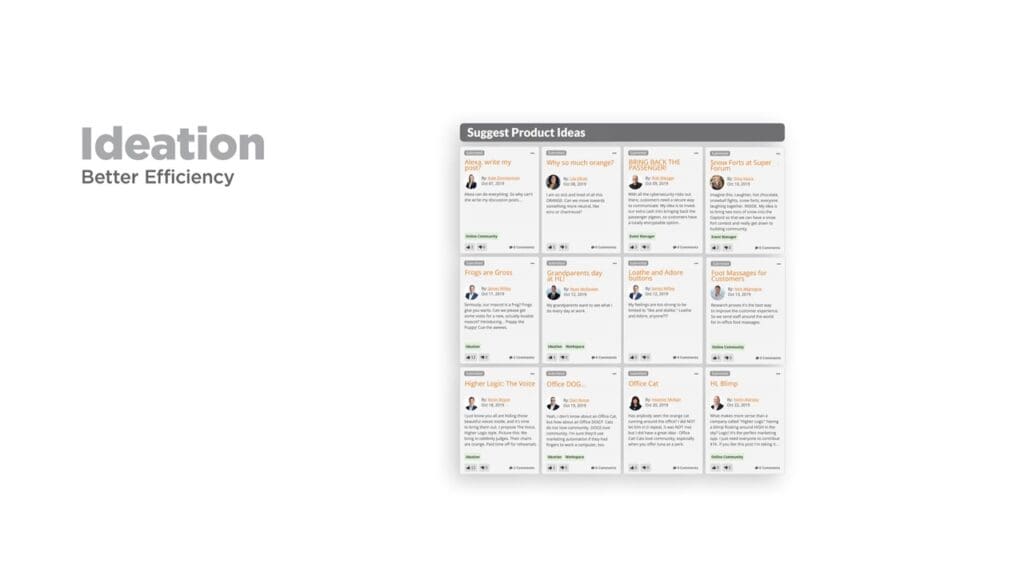
9 Signs You’re Ready for an Online Customer Community
How do you know if your company is ready for an online community? Use these common signs to self-evaluate your company and your customer base.
You’ve heard the online customer community hype, but you’ve got a lot on your plate. It might seem more than your company or department is ready for right now. But not so fast! Consider a community carefully before you pass up on a great opportunity to engage your customers, even at an early stage. Communities are the foundation of successful B2B customer engagement. You should make sure your gut feeling is 100% right before you pass up on an opportunity to invest in building a loyal customer base.
Want to dig deeper? Check out our complete guide to online community.
Use these 9 signs to assess whether your company is ready for an online community.
1. Your Customers are Asking for a Way to Connect
Have you noticed (perhaps this year, more than ever) that your customers have asked you for a way to connect with other customers? Without an in-person conference, they may have had no opportunity to network or learn from each other. They may not know they’re asking for a community and you may not have heard it asked in just this way, but the need could be expressed in any of these ways:
- Asking for advice on best practices
- Asking how others are using the platform
- Asking if you can share any examples about a certain use case
If you’ve heard any of these questions from customers, the solution may be a many-to-many engagement tool like a community where customers can learn from each other.
2. Your Customers are Connecting Somewhere Else
If your customers aren’t asking to connect, is it possible they’re connecting somewhere else already? Do they have a Facebook, LinkedIn, Clubhouse, or Slack group going? This is another big sign that you’re ready for an online community. If your customers are connecting elsewhere, it shows they want connection, but it also means you’re missing out on invaluable customer data and insight. Create a branded online community so that you become the destination for the industry conversation, instead of having to request to join the group they started.
3. You Had/Have a Successful and Well-Attended Customer Event
If you’ve had an annual conference for customers that does very well, this is a great sign for future community access. One of the main benefits of an annual event is the ability for customers to connect with each other. A well-attended event indicates that your customers are ripe for connection and will be excited to have a digital space where they can learn from each other and from you.
4. Your Product Team Wants Customer Input and Feedback
It won’t just be customers who benefit from the community, and you may already be seeing a need for it from staff without knowing it. For example, does your product team wish they had an easy way to solicit product feedback, improvement ideas, or customer input on the roadmap? If so, a customer community is the answer.

5. Customers Ask the Support Team Strategic Questions
Do customers come to your support and success teams with more than just technical questions? Does your support team have to go dig up answers to strategic questions from other departments? If you’re like any other SaaS company, they do. Customers looking to fully and successfully adopt your product need help with complex use cases. And the best people to answer those questions are their peers, the people using the product every day. A customer community gives your customers easy access to new strategies and best practices (and saves your support and success teams time).
6. You Want to Become More Customer-Centric
Your company talks about improving the customer experience and becoming more customer-centric, but it’s hard to know where to start. The best place to start is by listening to your customers.
Rather than sending out surveys with low response rates or calling customers one by one, implement a customer community to give you direct access to customer conversations, feedback, and trends. Enable and encourage each employee to participate, consume, and incorporate community content. This groundswell will bubble up into the way your company operates. And if your company is at an early stage in product development, what better way to make your product best-in-class right away?
Find out how Delphix uses community to listen to their customers at scale.
7. You’re Not Hearing from Your Customers Enough
A silent customer isn’t always a happy customer, and a lack of engagement can be a big warning sign for churn. With a community, you have a way to proactively engage your customers at every stage of the journey. You can listen to their needs and identify challenges they’re facing, both individually and across the broader customer base. A Higher Logic Community shows you which users have decreasing engagement in the community or who hasn’t created a profile yet. Then, you can use automated emails to reach out to these groups and ask how it’s going or invite them to get reinvolved.
8. Your Customers Want to be More Involved
You have power users and brand advocates who want to be involved. They’re praising you on LinkedIn, sharing tips and tricks where they can, and helping you with referrals. They speak for you on a webinar or at an event, but that just hits a group of people once, and it’s over.
You can give these power users an even bigger, more consistent way to get involved with a customer community. In your community, they can share knowledge, advocate for you, and help other customers adopt the product, all organically. If you allow prospects to join your community, it’s another huge way to create organic brand exposure as they rub shoulders with your most involved and dedicated users.
9. You Need to Identify Your Advocates
Maybe you’re not exactly sure who your customer advocates are yet. If that’s you, there’s no better way than to create a dedicated online space for users to gather and start talking. Watch and see who’s a power user, who helps other customers solve problems, who gives your team kudos about a new product release they love. A community is the perfect way to see those engaged and excited users rise to the top. Plus, with engagement tools like automation rules and personalized content (available in a Higher Logic Community), you can help customers climb the engagement ladder, taking them from user to advocate.
All Signs Point to Community-Ready
After reading through these signs, what’s your take? Are you ready for a customer community? Although just one indicator may not mean it’s time for a community, two or more should lead you to think seriously about implementing an online community platform.
What’s next? Don’t miss the 10 most important questions you should ask when evaluating online community vendors.



